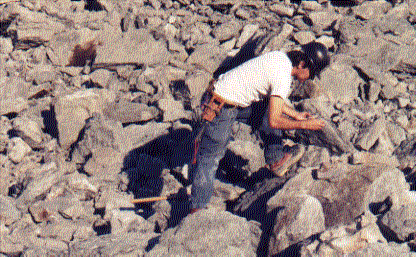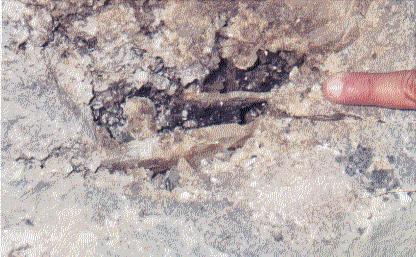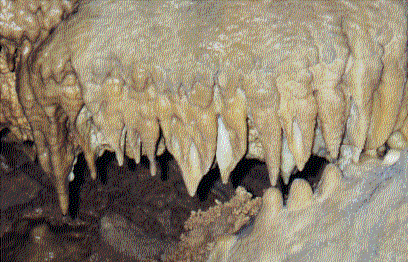


|
|
|
| The KYANA Geological
Society normally schedules an outing the third Saturday of each month.
We explore Kentucky, Indiana, and travel as far as Arkansas, Georgia, and
North Carolina. A trip to Mexico was even organized by several
of our members! Members receive liability insurance through the
S.F.M.S. since access to quarries is not open to individuals. Recent
trips include:
|
| Central Kentucky
Site 1 This location is well-known for calcite in garnet-like crystals (colorless, white and petroleum-stained brown) up to 5 cm wide. It also produced transparent yellow crystals, up to 8 cm. These turn colorless under sunlight. A variety of Ordovician fossils may also be found here. |
 Calcite in Garnet-like crystals Calcite in Garnet-like crystals |
 Transparent yellow crystals Transparent yellow crystals |
|
 Ordovician Fossils Ordovician Fossils |
|
Site 2 Famous for fluorite, barite, calcite, and rarer minerals like strontianite (in the Walker vein and in crystallized stromatoporoid sponges.) We have also found fossils of the Middle Ordovician Age. |
|
Site 3 Upper Ordovician fossils abound. Brachiopods, byrozoans, cephalopods, clams, corals, scolecodont teeth, and snails are often found. Many brachiopods are lined with calcite crystals and sometimes with dolomite and celestine. |

Cephalopod |
| Southern Indiana
Site 1 Members collect from the spoil banks of an old strip mine. Fossils are found in siderite concretions and commonly include a variety of fern leaves. |
|
Site 2 Famous for beautiful geodes with a variety of minerals including aragonite, barite (yellow crystals), calcite, dolomite, ferroan dolomite, jamborite (honessite), marcasite, millerite, pyrite (including pseudomorphs after ferroan dolomite), quartz (crystalline and chalcedony), smythite, and sphalerite. |
|
Site 3 This is a famous Upper Mississippian fossil locality. It is known for articulated crinoids, abundant blastoids, Archimedes bryozoans, brachiopods, snails, trilobites, and trace fossils. Vertabrate remains include a variety of shark teeth and dermal scales, rare coelancth, and chimerids remains. |

Archimedes Byrozoan |
|
Site 4 Famous for pink dolomite and white to amber calcite. The dolomite is rated by Dr. Carl Francis, curator of the Harvard Mineral Museum, as among the finest in North America. Minerals include: aragonite, barite, calcite, chalcopyrite, dolomite, glauconite, malachite, marcasite, millerite, pyrite, quartz, and sphalerite.
|

|

|
|
|
| North Central Kentucky
The geodes can contain calcite which may be highly fluorescent/ phosphorescent, gypsum, and quartz. The fossils are from the Mississippian age and include brachiopods, crinoids, shark teeth, etc. |
 shark tooth.jpg)
Symmorium (cladodont) shark tooth |
| Illinois-Kentucky
KYANA was a sponsor of a symposium held May, 1998. Trips included visits to mine dumps, an active quarry, the American Fluorite Museum in Rosiclare, IL, and the Clement Mineral Museum in Marion, KY. |
Last Updated: 12/13/2008
Please send feedback to: kyanageoshowchair@gmail.com